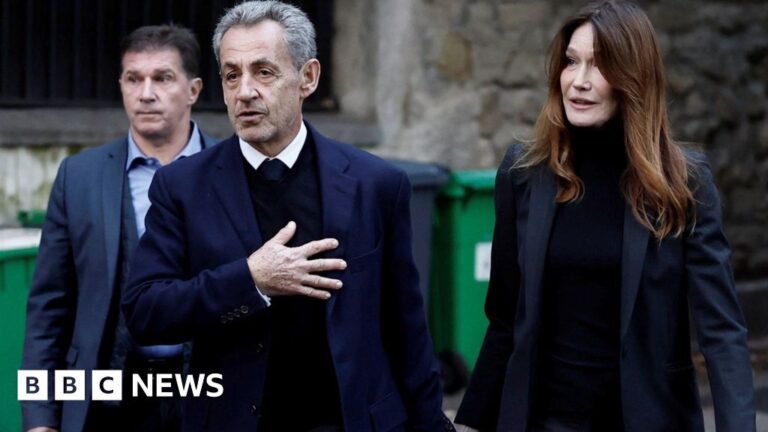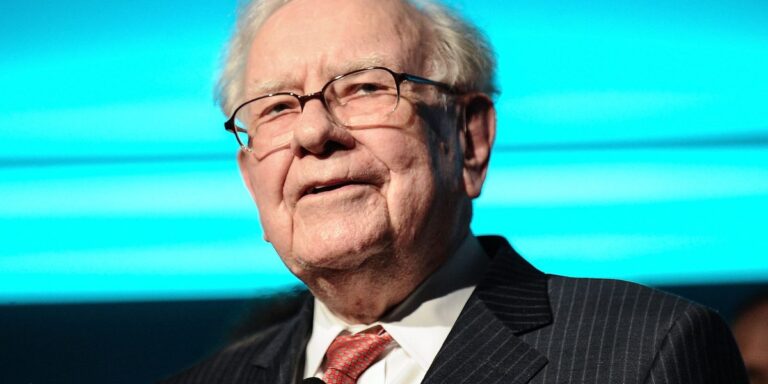As corporations rise and algorithms rule, are workers empowered or trapped in digital feudalism
Labels retaliate against Suno’s dismissal of YouTube stream-ripping accusations
Major record labels have fired back at Suno’s attempt to dismiss allegations that the AI music startup illegally downloaded copyrighted songs from YouTube.
They argued that Suno violated federal anti-circumvention laws regardless of any fair use defense.
In a reply brief filed on Monday (October 20) in Massachusetts federal court, and obtained by MBW, lawyers for labels owned by Sony Music, Universal Music Group and Warner Music Group defended their expanded lawsuit against Suno.
The music companies are suing Suno for mass infringement of copyright, alleging the AI startup used copyrighted recordings without permission to train its AI.
You can read the latest filing in full here.
In September, they filed a proposed amended complaint expanding the claims against Suno. They alleged that the AI company got its hands on the recordings by “stream-ripping” them from YouTube, i.e., by circumventing YouTube’s player window and downloading the files directly.
In response, Suno on October 3 asked the court to throw out the latest stream-ripping allegations. While Suno didn’t deny “stream-ripping” music from YouTube, the company’s lawyers argued that the practice is not illegal under the Digital Millennium Copyright Act (DMCA).
“The violation lies in the circumvention, not the reason for it.”
Lawyers for UMG, Sony Music and Warner Music subsidiaries
“The Court should deny leave to amend to add this new claim because it is futile,” stated Suno’s response, which can be read in full here.
Lawyers for the music companies have argued that Suno bypassed YouTube’s “rolling cipher” encryption system, which regularly changes access codes to prevent external downloading of videos and audio files.
They are now arguing: “The violation lies in the circumvention, not the reason for it.”
They noted that Section 1201 of the DMCA prohibits the act of bypassing technological measures that control access to copyrighted works, separate from any copyright infringement claims.
They wrote: “If Suno wanted fair use to shield it from liability entirely, it could have acquired its training data lawfully. Instead, it chose a cheaper and faster route: stream-ripping from YouTube.”
“If Suno wanted fair use to shield it from liability entirely, it could have acquired its training data lawfully. Instead, it chose a cheaper and faster route: stream-ripping from YouTube.”
Lawyers for UMG, Sony Music and Warner Music subsidiaries
“Suno has asserted fair use with respect to its subsequent copying… but fair use cannot excuse its unlawful access to Plaintiffs’ works in the first place.”
Suno had argued on October 3 that the amended lawsuit represents “a gambit to try to evade application of the fair use doctrine to Suno’s technology development process.”
Suno’s lawyers argued that the relevant part of the DMCA bans circumventing access controls on copyrighted media, meaning technology designed to limit access only to certain people (for instance, paying subscribers), and not copy controls, meaning tech that prevents people from copying copyrighted material.
In response, the music companies’ lawyers said Suno “wrongly treats” controlling access under Section 1201 “as an all-or-nothing proposition, arguing that once a copyright owner makes a work accessible to the public to any degree, no ‘access control can exist”
Citing a court’s 2001 decision in Universal City Studios v. Corley, the labels’ lawyers wrote: “Fair use has never been held to be a guarantee of access to copyrighted material in order to copy it by the fair user’s preferred technique or in the format of the original.”
The labels asked the court to grant their motion for leave to amend, arguing that their proposed amended complaint “easily meets” the standard for stating a claim.
On Friday (October 17), Bloomberg reported, citing people familiar with the matter, that Suno is in negotiations to raise over $100 million in a funding round that would value the company at more than $2 billion, a fourfold increase from the previous valuation.
Music Business Worldwide
France experiences a significant moment as Sarkozy is sent to jail.
Nicolas Sarkozy has become the first French ex-president to go to jail, as he starts a five-year sentence for conspiring to fund his election campaign with money from late Libyan dictator Muammar Gaddafi.
Sarkozy, who was president from 2007-2012, has appealed against his jail term at La Santé prison, where he will occupy a small cell in the jail’s isolation wing.
The BBC’s Paris Correspondent Hugh Scofield described his incarceration as “a big moment” for France.
Challenging the Client
A required part of this site couldn’t load. This may be due to a browser
extension, network issues, or browser settings. Please check your
connection, disable any ad blockers, or try using a different browser.
Japan’s First Female Prime Minister Signals Shift to the Right
new video loaded: Japan Shifts Further Right With Its First Female Prime Minister
By Javier C. Hernández, Nailah Morgan, Kiuko Notoya and Christina Shaman
October 21, 2025
Sanae Takaichi: Japan’s ‘Iron Lady’ and Potential First Female Prime Minister | Political Updates
EXPLAINER
Takaichi, an admirer of Margaret Thatcher, is a social conservative and faces a range of challenges stepping into office.
Sanae Takaichi is set to become the first female prime minister of Japan after winning a leadership vote in the legislature.
She was due to meet with Emperor Naruhito on Tuesday following her win, solidifying her place in history.
Recommended Stories
list of 4 itemsend of list
Here’s what you need to know about Japan’s next leader:
What is Takaichi’s background?
Takaichi, 64, entered Japanese politics in the 1990s as a member of the long-ruling Liberal Democratic Party.
She was born in Nara prefecture in central Japan and graduated from Kobe University, according to her official biography.
Her upbringing was somewhat more humble than other senior members of the LDP, many of whom graduated from elite universities like the University of Tokyo and the Harvard Kennedy School.
Takaichi is best known as the protege of the late Prime Minister Shinzo Abe. She served in several iterations of his cabinet and in the cabinet of the former Prime Minister Fumio Kishida.
What are Takaichi’s politics?
An admirer of the late British Prime Minister Margaret Thatcher, Takaichi has been referred to in the media as Japan’s “Iron Lady” for her similarly conservative bent.
In the recent leadership race, Takaichi advocated for economic policies reminiscent of her mentor’s “Abenomics” – a strategy of fiscal expansion, monetary easing and structural reform.
On social issues, she opposes same-sex marriage, takes a harder line on immigration, and believes the imperial succession should still give preference to men.
She’s also known as a “China hawk” who supports a stronger military and status quo in the Taiwan Strait. As a member of the LDP, she has also made several visits to meet Taipei’s political parties, much to the chagrin of China.
Other controversial trips include past visits to Yasukuni Shrine, a memorial to Japan’s war dead. The shrine is a thorny issue in Japan and abroad because it also enshrines World War II war criminals.
What does Takaichi’s win mean for Japan?
Takaichi’s victory means that Japan will continue down a path of conservative governance with a more right-wing shift, according to experts.
Conservative politics in Japan, however, are somewhat different from the West, says Stephen Nagy, a professor of politics and international studies at Japan’s International Christian University.
While Takaichi wants to strengthen Japan’s defence force and curb immigration, one thing she will not be changing is Japan’s social welfare system.
“Conservative in Japan means strong on security, it means strong on China, it means strong US-Japan relations. It means protecting the emperor system,” he told Al Jazeera ahead of the vote. “It usually [also] means an interventionist government that provides quite a bit of social welfare programmes.
“We’ll see Takaichi lead a new conservative LDP party – but conservative in the Japanese-defined sense of conservative,” he added.
What’s next for Takaichi?
Takaichi’s road to victory was not straightforward, and she still faces many uncertainties.
She will become Japan’s fourth prime minister in five years and takes the helm from a relatively weak position.
While the LDP has been the dominant political force in post-war Japan, the party has lost its majority in both houses of the legislature over the past two years. Its long-term coalition with the far-right Sanseito party also collapsed shortly after Takaichi was elected leader of the LDP in October, due to disagreements about campaign donations and anticorruption measures.
The LDP was able to form a new alliance with the Japan Innovation Party, another conservative party, securing enough seats in the legislature for Takaichi’s win this week.
But as PM, Takaichi will need to address challenges ranging from Japan’s cost of living crisis to the effects of US President Donald Trump’s trade war, and the country’s long-term security concerns about China and North Korea. The LDP is also still recovering from a major corruption scandal.
Experts say she will also need to soften some of her tougher edges if she wants to stay in power – or face a no-confidence vote from the legislature in the near future.
Following Warren Buffett’s Path: How 15% of Billionaires Achieve Wealth through Finance
The number of people who may think a banana costs $10 has exploded in the last few decades. The US has 902 billionaires this year, up from 66 in 1990, when the economy was less than half of its current size and $410 million was equivalent to $1 billion in today’s dollars.
US billionaires are collectively worth about $7.6 trillion, according to Forbes data analyzed by Americans for Tax Fairness. That accounts for ~4.5% of all wealth held by Americans, while making up just .0003% of the population.
Who (and where) are they?
The US leads the pack, home to almost one-third of the world’s 3,028 people with a $1+ billion net worth, followed by China (450), India (205), Germany (171), and Russia (140), per Forbes.
The folks for whom a Ferrari impulse buy is roughly the financial equivalent of your last-minute decision to Uber to the airport tend to cluster in cities. Forbes found that the leading billionaire hubs are New York City (home to 123 billionaires), Moscow, Hong Kong, London, and Beijing.
It’s a boys club, with women accounting for just 13% of the world’s billionaires, according to the Altrata Billionaire Census—though that number is growing.
Tracing the benjamins
Some routes are more likely than others to land you in the exclusive club that includes Bill Gates, Ronaldo, Selena Gomez, French fashion executives, and Russian oil tycoons:
- The most common way to achieve billionairehood is to be born into a wealthy family or by marrying into wealth, with a third of billionaires having inherited much of their net worth.
- The likeliest professional path to billionaire status is to follow in Warren Buffett’s footsteps, as 15% of billionaires derive their net worth from the finance and investment industry.
- Tech minted 13% of billionaires, followed by manufacturing (11%), fashion and retail (10%), healthcare (7%), food and beverage (7%), real estate (7%), diversified industries (7%), media and entertainment (4%), and energy (4%).
Most can’t fully cash out: Billionaires typically aren’t able to build a castle out of hundred-dollar-bill stacks, since 66% of their net worth is tied up in stocks (often in a company they started), which they can’t sell easily, according to Altrata.—SK
This report was originally published by Morning Brew.
India’s capital wakes up to toxic haze the day after Diwali
India’s capital Delhi woke up to a toxic haze as air quality worsened after the Hindu festival of Diwali, despite a court directive to use less-polluting crackers.
People in the city and its suburbs burst crackers late into Monday night, defying the court’s order to use only ‘green’ fireworks for a limited period of time.
Delhi, which has high pollution through the year due to factors including vehicular emissions and dust, had already seen air quality dipping over the past few days.
On Tuesday, the Air Quality Index (AQI) in Delhi was 360, according to government data. The AQI measures the level of PM 2.5 – fine particulate matter that can clog lungs and cause a host of diseases – in the air.
Levels between 101 and 200 are considered moderate, while those between 201 and 300 are “poor”. Between 301 and 400 is categorised as “very poor” and a figure higher than 400 is considered “severe”.
The World Health Organization’s guidelines say that exposure to PM 2.5 over a 24-hour-period should be limited to 15 micrograms per cubic metre – but Delhi’s AQI in some parts is 24 times higher than the recommended level.
The city’s pollution problem becomes worse in winter as farmers in neighbouring states burn crop stubble. Low wind speeds also trap pollutants – such as those produced by firecrackers – in the lower atmosphere, making it hard to breathe.
That’s why firecrackers had been banned in Delhi and its suburbs during Diwali since 2020. However, this rule was not strictly enforced on the ground and crackers were still available for purchase in many shops, leading to its use during the festival.
Last week, India’s Supreme Court relaxed the blanket ban, allowing people to use so-called green crackers, which its makers say emit 20-30% less pollutants than traditional ones and generate minimal ash. Critics, however, have pointed out that even though comparatively less harmful, these crackers still release toxic substances into the air.
In the run-up to Diwali, BBC reporters saw traditional crackers still being sold openly in shops. And while the court had allowed green crackers to be burst only during a limited window – one hour in the morning and two in the evening on Diwali and the day before it – the sound of fireworks could be heard well past midnight in many areas.
On Tuesday, when BBC reporter Vikas Pandey left his home in Noida (a suburb of Delhi) at around 0600 local time (0030 GMT) to catch an early morning flight, he realised “the familiar smell of burning charcoal was back”.
“The air was filled with smoke and visibility was poor. I could taste ash in my mouth. As the taxi entered Delhi, visibility became even poorer. The tall buildings which are usually visible at this hour had disappeared behind a thick veil of smog,” he says.
Experts are worried that the relaxing of rules around crackers could affect awareness around the dangers of air pollution which was being developed over the past few years.
To be sure, Delhi’s air quality was already in the “very poor” category, with AQI crossing 300, for around a week now, due to several factors such as low wind speed, vehicular emissions and stubble burning in neighbouring states.
On Sunday, officials invoked the next stage of the Graded Response Action Plan (GRAP) in Delhi and its suburbs, imposing restrictions on the use of diesel generators and burning of coal and firewood in a bid to improve air quality.
For now, as the familiar smog descends on Delhi, its residents appear resigned.
“You can’t even think of stepping outside. The situation seems to be equally bad in densely populated areas and rural areas in Delhi today,” said Paras Tyagi, who lives in the capital.
Follow BBC News India on Instagram, YouTube, Twitter and Facebook.
Rockets Ranked in Top 10 of NBA Power Rankings for Upcoming Season.
The Houston Rockets enter the new NBA season surrounded by excitement and rising expectations. In The Athletic’s latest power rankings, analyst Law Murray placed Houston at No. 10 overall, confirming that the franchise’s rebuild has evolved into contention.
Rebuilding Into Relevance
After a busy offseason, the Rockets look ready to compete with the West’s elite. Their biggest move came with the addition of Kevin Durant, who joined a young team that finished 52-30 last year and earned the No. 2 seed in the conference. Durant’s arrival adds instant firepower to a roster that already includes Alperen Sengun, Amen Thompson, and Fred VanVleet.
Houston also added experienced veterans to stabilize its offense, which struggled with consistency at times. However, two questions still hover, how VanVleet will recover from his torn ACL, and how much mileage Durant has left in his legs.


Murray’s Evaluation
Murray labeled Houston “a glass-half-full, glass-half-empty team,” pointing out both promise and pressure.
“Half full: They were the No. 2 seed in the West! Half empty: They won 52 games, 16 fewer than the No. 1 seed and four more than the No. 8 seed,” Murray wrote.
“This is a really good team, but don’t be surprised if it plateaus rather than ascends this season.”
Murray predicted Houston will finish as the sixth seed and lose to the LA Clippers in the second round of the playoffs. That projection still represents progress after last year’s first-round exit to the Golden State Warriors.
A Crowded Western Conference
The Western Conference remains loaded with talent. The Thunder, Clippers, Warriors, Nuggets, and Lakers occupy the top spots ahead of Houston. Still, the Rockets’ mix of star experience and young athleticism could close that gap quickly.
With Sengun becoming an All-Star talent and Thompson developing into a future star, the Rockets have built a balanced foundation. Durant’s leadership and Ime Udoka’s coaching give Houston the structure to take another leap.
If the team stays healthy, the Rockets could easily outperform their ranking — and rejoin the true contenders in the West.










